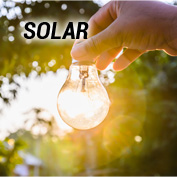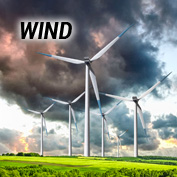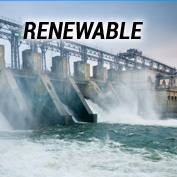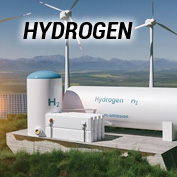ZERO CARBON
INDUSTRY INFO
Decarbonization Africa
Reaching Carbon neutrality is becoming a guiding principle in industrial, energy and transportation sectors and also a target of sustainable development for municipalities, cities, and nations.
The assessment and evaluation of greenhouse gas emissions, the strategy development for decarbonization and the evaluation and implementation of measures for greenhouse gas reduction are all steps to achieve carbon neutrality.
Firmenich, Gilbert Ghostine, CEO: “We can only preserve the planet for generations to come if companies and governments act together to build a clear path towards carbon neutrality.”
Independent analysis and review
Zero Carbon Namibia stives to offer the best fit for purpose solution to their clients. Therefore, ZCN benchmarks itself against international leaders in the renewable energy sector.
ZCN has therefore requests the independent input, advice and assistance in the development of their solutions.
Fichtner is one of the leading independent technical consultancy firms. Established in 1922 by Martin Fichtner as a regionally focused engineering office, the Fichtner Group supports energy and infrastructure projects worldwide and today has a staff strength of about 1800. Over 800 of those employees work at Fichtner GmbH & Co. KG with its head office in Stuttgart, consisting mainly of experienced engineers but also complemented by economists, management consultants and IT experts from a variety of fields.
Specialists from our four business sectors – Energy, Renewable Energies & Environment, Water & Infrastructure, and Consulting & IT – work together under one roof at Fichtner. Our fields of expertise complement one another, enabling us to readily mobilize interdisciplinary teams at short notice to meet the requirements of a particular project




SOLAR
Solar power is the conversion of energy from sunlight into electricity, either directly using photovoltaics (PV), indirectly using concentrated solar power, or a combination. Photovoltaic cells convert light into an electric current using the photovoltaic effect. Concentrated solar power systems use lenses or mirrors and solar tracking systems to focus a large area of sunlight to a hot spot, often to drive a steam turbine.
Photovoltaics were initially solely used as a source of electricity for small and medium-sized applications, from the calculator powered by a single solar cell to remote homes powered by an off-grid rooftop PV system. Commercial concentrated solar power plants were first developed in the 1980s. Since then, as the cost of solar electricity has fallen, grid-connected solar PV systems have grown more or less exponentially. Millions of installations and gigawatt-scale photovoltaic power stations have been and are being built. Solar PV has rapidly become a viable low-carbon technology, and as of 2020, provides the cheapest source of electricity in history.
As of 2021, solar generates 4% of the world's electricity, compared to 1% in 2015 when the Paris Agreement to limit climate change was signed. Along with onshore wind, the cheapest levelised cost of electricity is utility-scale solar. The International Energy Agency said in 2021 that under its "Net Zero by 2050" scenario solar power would contribute about 20% of worldwide energy consumption, and solar would be the world's largest source of electricity.
Floatovoltaics, also known as Floating solar, is a solar power generator that is deployed upon water bodies. They are mounted upon a firm platform.
Unlike the system used in solar PV plants, the floating PV uses pontoons (pontoons can float while carrying heavy loads) as floats. The components of the Floating PV system include power converters, anchoring system, cabling, PV modules, transformers, etc. for functioning.
Source - https://en.wikipedia.org/wiki/Solar_power
WIND
Wind power or wind energy is mostly the use of wind turbines to generate electricity. Wind power is a popular, sustainable, renewable energy source that has a much smaller impact on the environment than burning fossil fuels. Historically, wind power has been used in sails, windmills and windpumps but today it is mostly used to generate electricity. Wind farms consist of many individual wind turbines, which are connected to the electric power transmission network.
Source - https://en.wikipedia.org/wiki/Wind_power
RENEWABLE
Renewable energy is energy that is collected from renewable resources that are naturally replenished on a human timescale. It includes sources such as sunlight, wind, the movement of water, and geothermal heat. Although most renewable energy sources are sustainable, some are not. For example, some biomass sources are considered unsustainable at current rates of exploitation. Renewable energy often provides energy for electricity generation to a grid, air and water heating/cooling, and stand-alone power systems. About 20% of humans' global energy consumption is renewables, including almost 30% of electricity. About 7% of energy consumption is traditional biomass, but this is declining. Over 4% of energy consumption is heat energy from modern renewables, such as solar water heating, and over 6% electricity.
Source - https://en.wikipedia.org/wiki/Renewable_energy
HYDROGEN
Hydrogen fuel is a zero-carbon fuel burned with oxygen; provided that it is created in a process that does not involve carbon. It can be used in fuel cells or internal combustion engines.
Regarding hydrogen vehicles, hydrogen has begun to be used in commercial fuel cell vehicles such as passenger cars, and has been used in fuel cell buses for many years. It is also used as a fuel for spacecraft propulsion.
Because pure hydrogen does not occur naturally on Earth in large quantities, it usually requires a primary energy input to be produced on an industrial scale.
Hydrogen is locked up in enormous quantities in water, hydrocarbons, and other organic matter.
Source - https://en.wikipedia.org/wiki/Hydrogen_fuel
